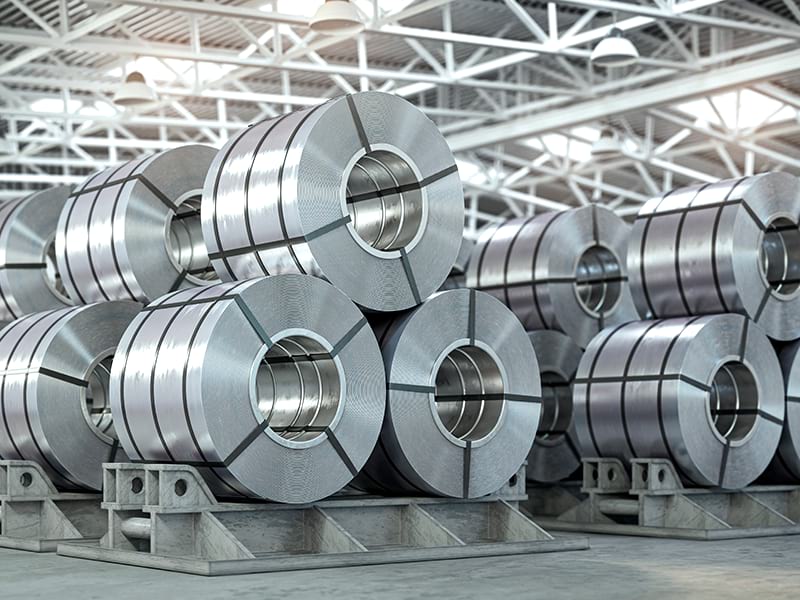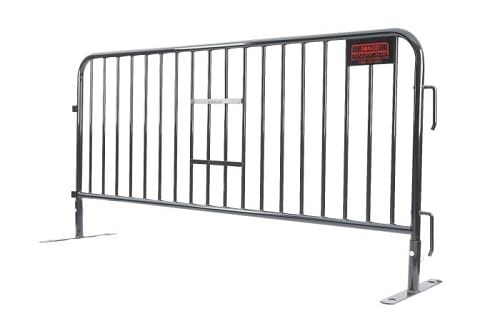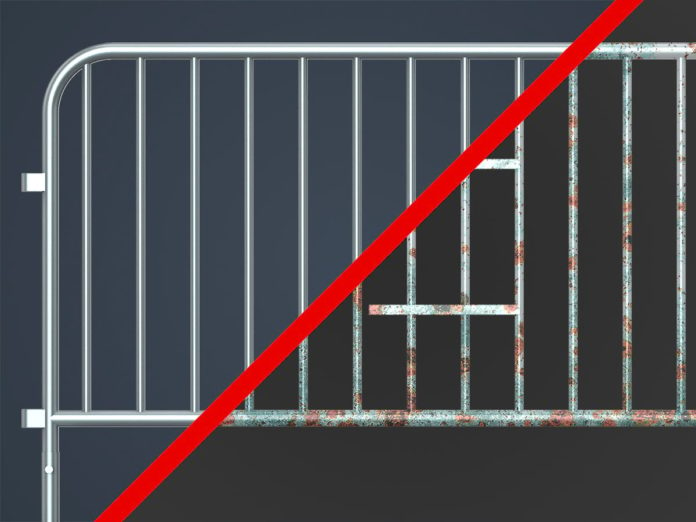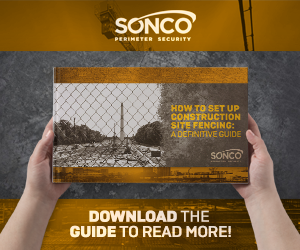Here at the Safety Sticklers, we believe that the most well-informed are the safest and most successful. It’s a commitment that also inspired us to answer one of our most commonly asked questions: what does galvanized mean?
We started this blog to deliver expert insight surrounding crowd control, work zone safety, event management, brand promotion, and beyond. But no matter your industry, knowing what the different terms mean for commonly used products can make the difference when it comes to getting the right product.
- 1 What Does Galvanized Mean?
- 2 Does Galvanized Steel Rust?
- 3 What Is the Life Expectancy of Galvanized Steel?
- 4 How to Galvanize Metal
- 5 The Difference Between Galvanized Iron and Galvanized Steel
- 6 The Difference Between Galvanized Steel and Weathering Steel
- 7 Powder Coating vs. Galvanized Steel
- 8 Is It Galvanized or Galvanised?
- 9 Partner with a Barricade Expert
What Does Galvanized Mean?

Galvanizing steel means applying a protective layer of zinc to prevent rust and corrosion. This protective zinc coating is often a more affordable (and still effective) alternative to using a different type of metal altogether.
Further, steel is often the preferred base metal for many pieces of equipment in the crowd management and construction industries.
For example, stainless steel barricades are hailed for their high level of durability while still being transportable. When they receive a bath of molten zinc, they can be used in all weather conditions.
Does Galvanized Steel Rust?
Will galvanized steel rust if it’s left out for long enough? Yes. Eventually, galvanized steel will rust in rainy or humid environments. However, it will take years longer than non-galvanized steel, which is why it’s an essential component to steel barricades and other products used outdoors.
The protective zinc coating of galvanized steel is a sacrificial protection, meaning its purpose is to wear away at a far slower rate than what’s beneath it. It also wears away as a white powder rather than the unseemly orange rust of steel.
Of course, how long it takes to rust is a different question, and addressed in the next section.
What Is the Life Expectancy of Galvanized Steel?
Corrosion protection is not permanent. But how long does galvanized steel last? According to the American Galvanizers Association, galvanized steel barricades can last over 70 years.
However, the precise amount of time is hard to predict. For event management and municipal crowd control applications, barricades are being handled and stacked regularly, pedestrians knock them over, they can be hit by cars, and a wide range of other factors that will reduce its lifespan.
Further, a galvanized steel barricade will last longer in areas with less rainfall and humidity, such as the Southwest United States. They will also wear down more quickly in maritime or continental environments like the Northeast.
How to Galvanize Metal
Before metal is galvanized, it’s inspected for quality, then thoroughly cleaned. Then it’s dipped.
The hot dip galvanization process involves the steel being literally dipped in 850 degree molten zinc. The resulting chemical reaction creates three layers of zinc-iron alloy below a pure zinc layer on top. All those layers between the environment and the steel are how the barricades can last for more than seven decades in some instances.
This hot dipping process was first patented in France in 1836. You can read the full history here (it’s actually quite fascinating!)
The Difference Between Galvanized Iron and Galvanized Steel
Steel is a metal alloy consisting of iron and carbon. Those are the two essential ingredients, but many other elements are often added to further improve strength, durability, and longevity.
For example, stainless steel includes chromium that further improves corrosion resistance. That makes galvanized stainless steel among the longest lasting material for outdoor applications.
Iron, on the other hand, is simply that. There is no chemical difference between cast iron and wrought iron; however, cast iron is melted and poured into a mold whereas wrought iron is heated and worked to create the desired shape. The result of the wrought iron being worked makes it a more durable iron, which is why it’s so commonly used for fences, railings, and outdoor lighting.
The Difference Between Galvanized Steel and Weathering Steel
The biggest difference between galvanized steel and weathering steel is the maintenance requirements. Weathering steel usually requires more replacing and repairs, whereas galvanized steel lasts longer. Weathering steel is becoming an increasingly dated form of construction material, particularly in bridge building.
Powder Coating vs. Galvanized Steel

Powder coating is a protective layer on steel barricades, but it is most typically used for indoor environments. Because you can customize the color of the powder coating, it’s also a popular aesthetics choice. Powder coating is done by covering steel in powder, then heating the equipment to create the protective finish.
Galvanized steel involves heating zinc to molten temperatures separate from the steel. The steel tubing or sheet is then dipped into the molten zinc.
Can You Powder Coat Galvanized Steel?
Yes, you can powder coat galvanized steel. First, the steel is cleaned and galvanized in molten zinc, cooled, then powder coated and reheated. The powder coating not only creates a custom color finish, it further protects the barricade.
Is It Galvanized or Galvanised?
Galvanized with a Z is the American spelling, and Galvanised with an S is how it’s spelled in the rest of the English speaking world. Both mean the same thing: zinc coating to create protective steel.
However, both forms are also used interchangeably, even in the US, which can make things a bit confusing – unless you have a traffic safety and grammar nerd such as this writer to clear things up. If you see a company list their steel barricades as galvanised, you can rest assured it’s a zinc coating to steel or iron.
Partner with a Barricade Expert
The best way to make sure you’re getting the right barricade specific to your application, budget, and goals is to partner with a Sonco expert. We have the experience and proven advice that ensures you have what you need to get the job done.
In some cases, galvanized steel isn’t the best option. In others, it’s the only option. Get in touch with us today, and we’ll get right to work on exceeding your expectations.




